MusicRadar Verdict
The IK Multimedia iRig Pro Duo I/O boasts good enough specs to give you very good recording results wherever you are, even matching some studio-bound devices which cost far more. A great mobile solution then, but one with much more varied and high quality ambitions.
Pros
- +
Compact and rugged design
- +
Very portable
- +
Good quality preamps and recordings
- +
Great range of audio applications
- +
And either in or away from the studio
- +
Good bundle of software
Cons
- -
Power supply is optional
MusicRadar's got your back
IK Multimedia iRig Pro Duo I/O review: What is it?
The IK Multimedia iRig Pro Duo I/O is a 2-channel mobile recording solution/audio interface from IK Multimedia's vast iRig range of products, which now covers everything including guitar interfaces, microphones that plug into just about anything and controller keyboards of all shapes and sizes. Pro Duo I/O is also an update to the original Pro Duo (read the original IK Multimedia iRig Pro Duo review here) released back in 2016, and features a slightly sturdier construction and better quality interfacing, but still has a huge range of flexible recording scenarios in mind.
Indeed there's no doubting that IK Multimedia has an eye on just about every audio application with iRig Pro Duo I/O, both in and away from the studio. It comes with batteries (2 x AA) and Lightning, USB-C and USB-A cables so can be used with iOS or Android devices but will also draw power by USB for more flexible use with a Mac or PC (it can be powered by DC but the adapter for this is an optional extra). And overall, it boasts decent enough specs to capture good quality audio recordings for a lot of different situations including music production, live streaming plus audio for podcasts and videos.
These specs include two combination XLR / 1/4” guitar, mic and line inputs with 'high-quality' mic pres, a couple of 2.5mm MIDI In and Out connections (with breakout cables supplied) and two balanced 1/4” outputs for connection to speakers or other devices. Connect the device up to your DAW, then, and it will function as both a 2-channel audio and MIDI interface and the fact that it comes with those combi inputs and 48v phantom power means you can plug pro grade microphones into it as well as your guitar, bass and keys. In short, iRig Pro Duo I/O is designed to record anything and anywhere.
- Record for less with the best budget audio interfaces
IK Multimedia iRig Pro Duo I/O review: Performance & verdict
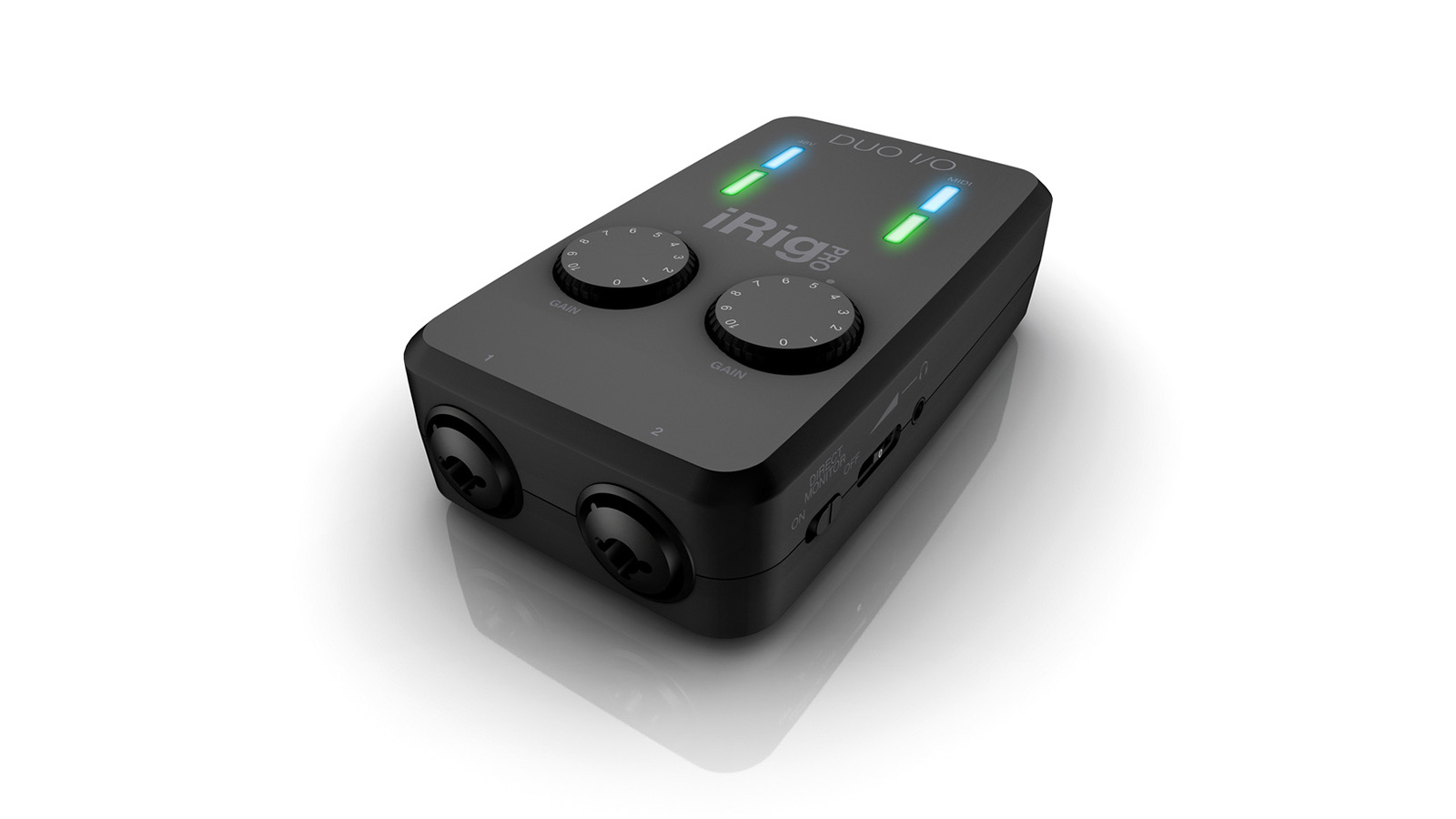
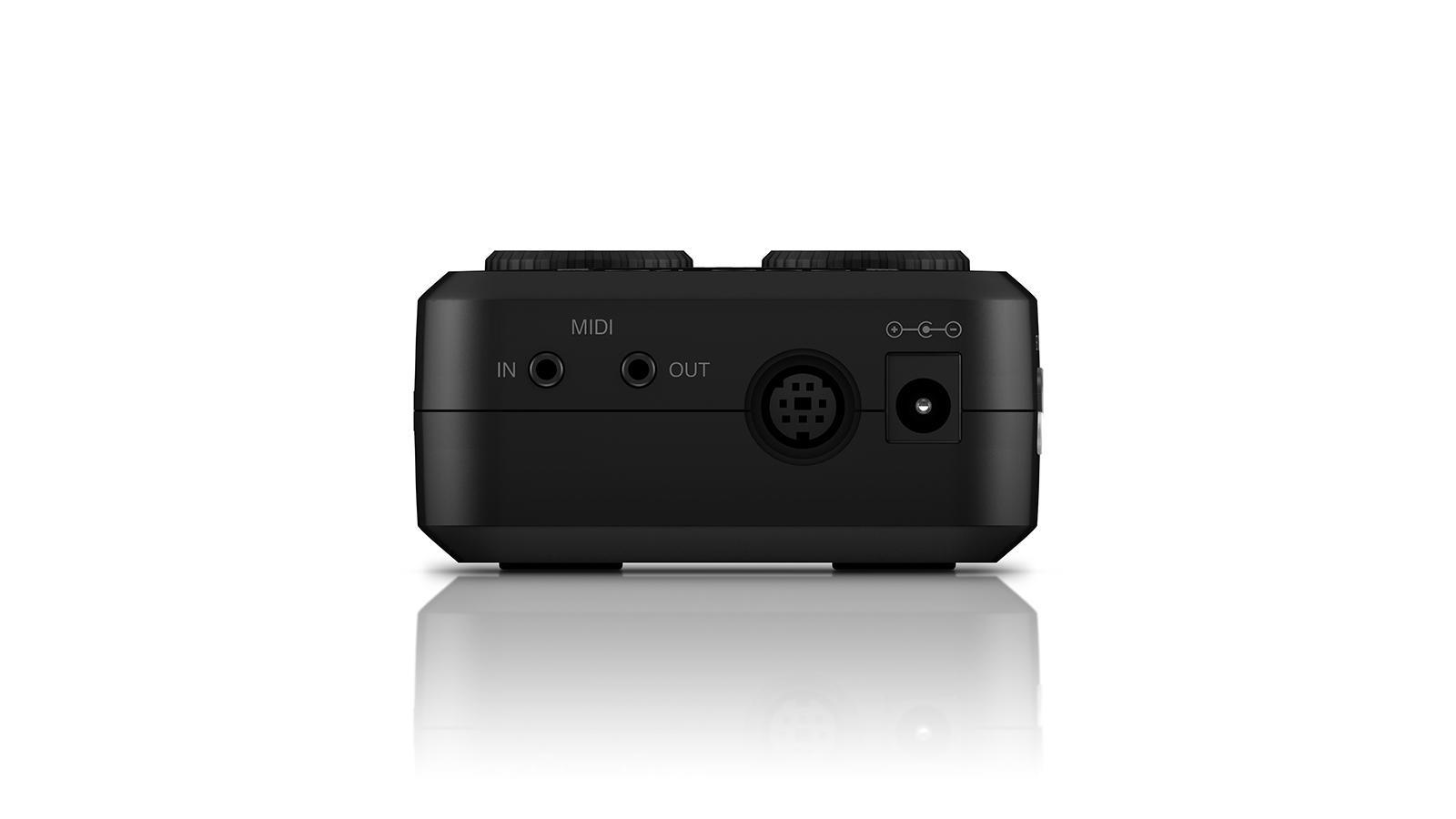
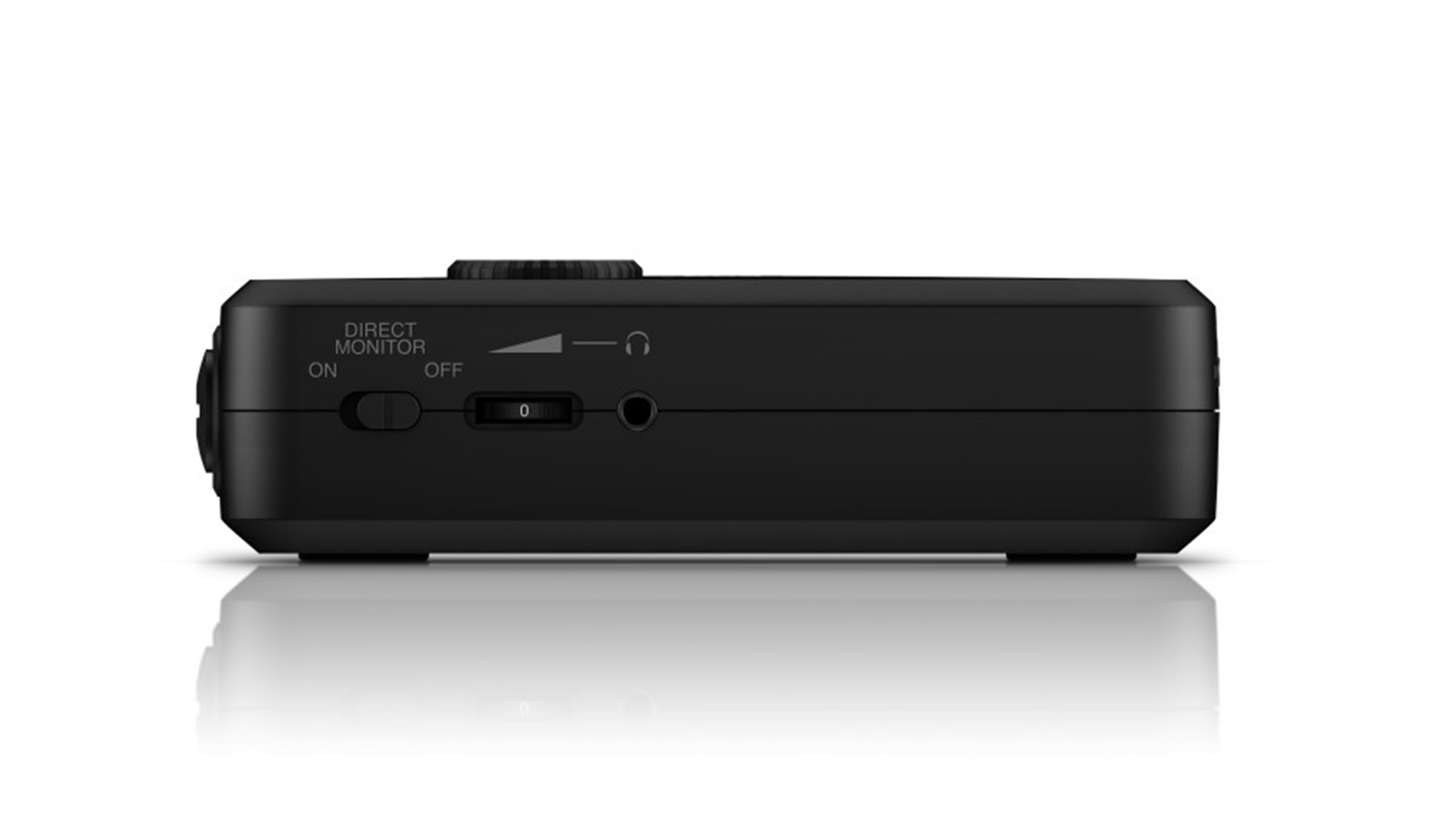
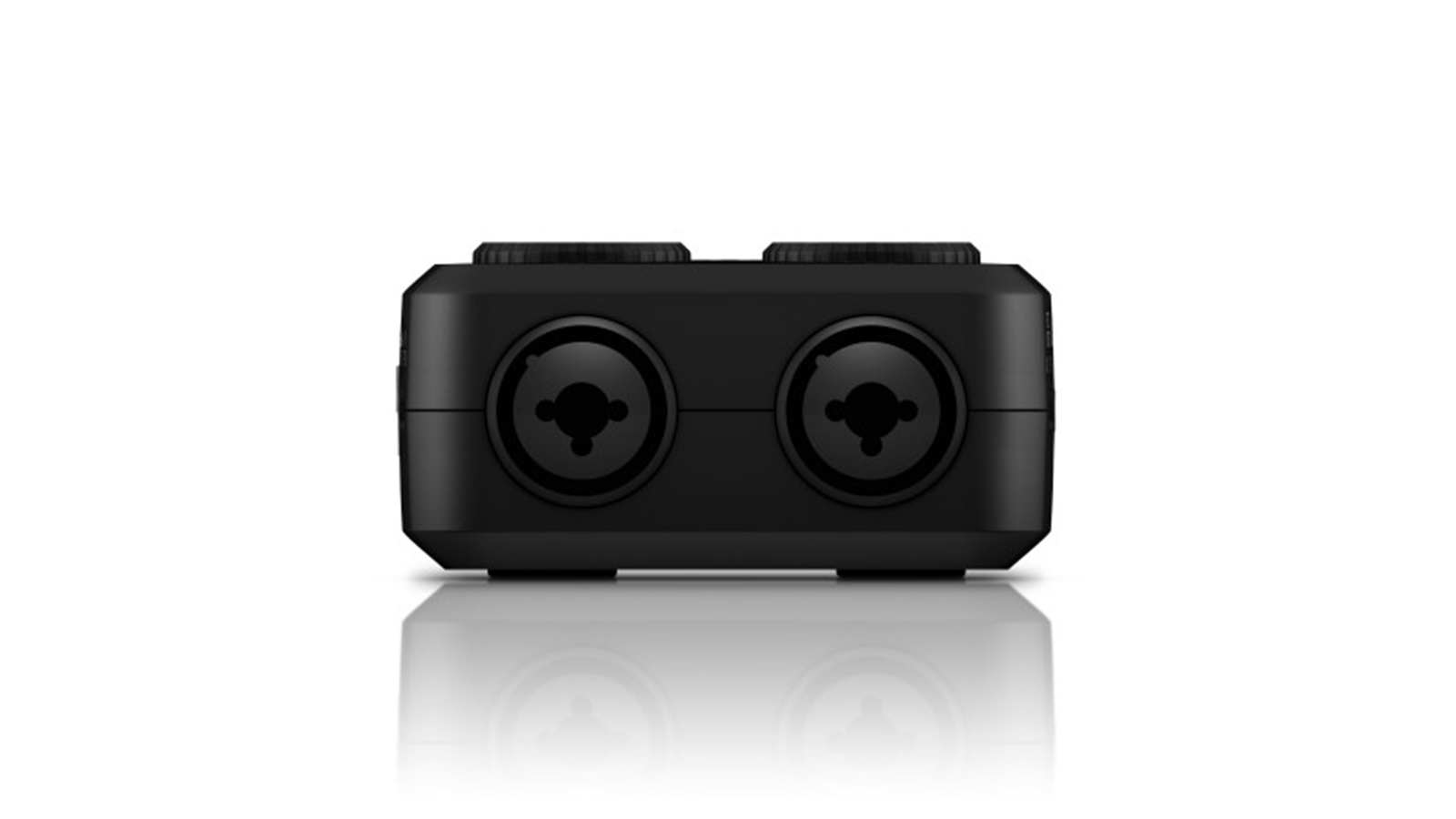
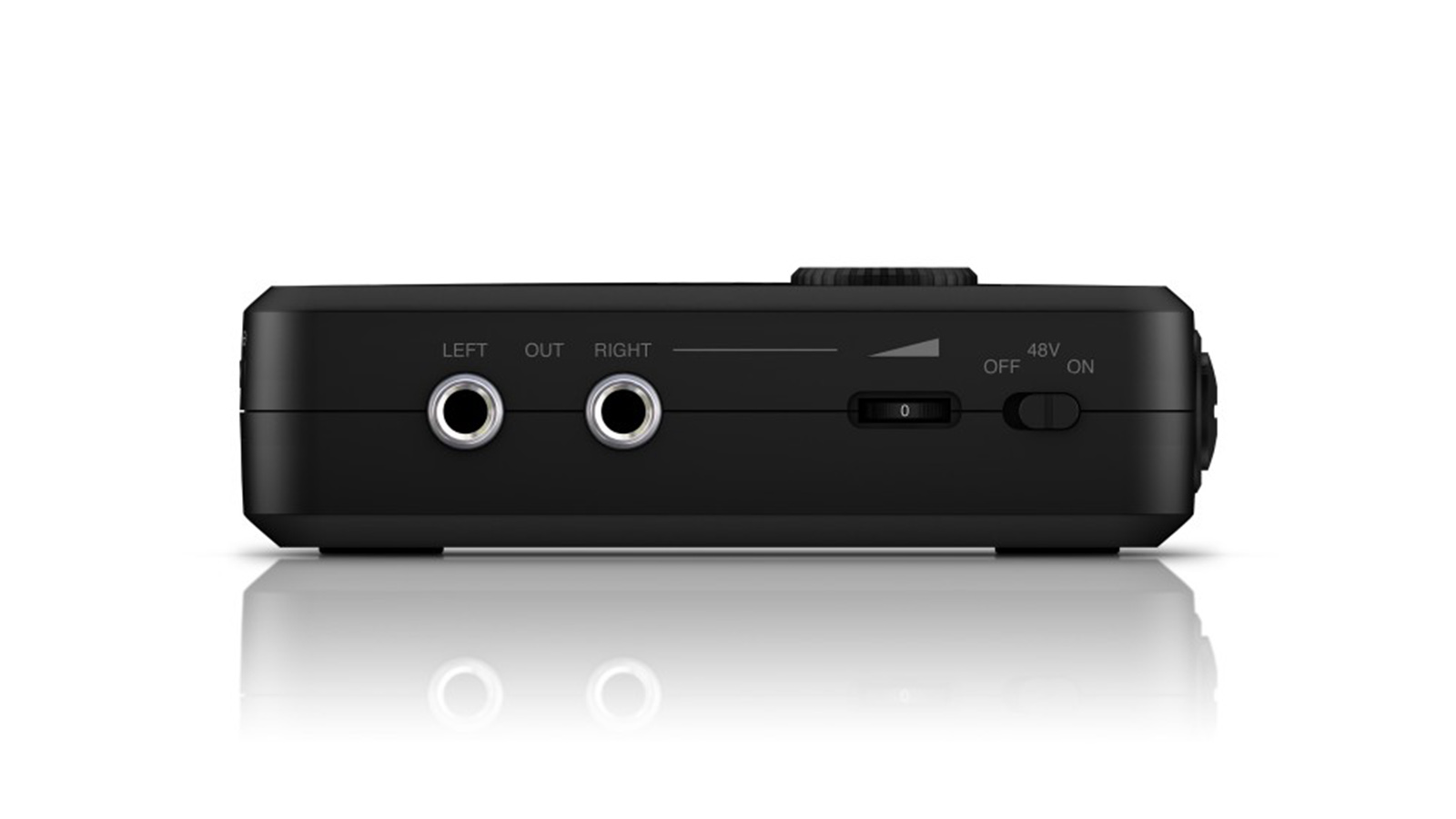
iRig Pro Duo I/O certainly feels rugged with a reassuringly solid construction and an improvement over the original Pro Duo. It’s also compact enough to carry around in a large pocket, although it’s not the smallest of iRig devices. Two meters on the front show mic and audio input levels as well as MIDI, and a couple of dials control the audio input levels from the combi inputs at the bottom of the device.
On one side you get the +48V switch option, two audio outputs plus a level control for these. On the top are the mini MIDI connectors, proprietary connector for USB power and Lightning plus the (optional) DC power connector. Finally, connectivity wise, on the other side of the unit you get a direct monitoring option with level control so you can monitor via headphones.

Focusrite iTrack Solo: Direct monitoring +48v phantom power but only one input
Roland Go:Mixer Pro: Less features but a more affordable mobile interface
PreSonus Audiobox USB 96: One of the best 2-channel interfaces on the market but doesn't quite match the mobile credentials
Rubberized feet underneath the unit mean it will sit nicely on your desktop, although there's no angling option if you want to set it further back on your desk. These certainly help it stay in position and we found it more stable and sturdy than the previous version. iRig Pro Duo I/O certainly handles basic MIDI duties with ease but its audio capabilities might well surprise some, given its mobile credentials, price and size. While testing, we took advantage of the many and varied cables and interfacing options, using it as an interface in both desktop and mobile environments.
Vocal recording is surprisingly good – easily good enough for podcasts and up there with more expensive interfaces – and it's easily one of the cheapest and most flexible solutions for connecting up a high-quality condenser mic up to a range of mobile and desktop devices. Instrument recordings are just as good and it's able to deliver the weight and range it should with minimal noise only really evident at higher input levels.
Want all the hottest music and gear news, reviews, deals, features and more, direct to your inbox? Sign up here.
iRig Pro Duo I/O comes bundled with a good bundle of software including IK's AmpliTube 4 amp modeller and effects, SampleTank 4 SE and nine mixing and mastering plugins. Together with this bundle and the unit's MIDI capabilities that can allow a MIDI keyboard to be connected, iRig Pro Duo I/O could easily be the central and vital component of a mobile studio, whilst also helping you fulfill much wider musical ambitions.
IK Multimedia iRig Pro Duo I/O review: Hands-on demos
IK Multimedia
Geekanoids
SoundsAndGear
IK Multimedia iRig Pro Duo I/O review: Specifications
- Interface type: Mobile (Android and iOS), Mac and PC
- Connections: 2 x combi XLR 1/4” inputs, 2.5mm MIDI In and Out, 2 x balanced 1/4” outputs, 3.5mm headphone out Power: 2 x AA batteries (supplied), USB, DC (PSU optional)
- Cables: USB (for external power from a Mac or PC) plus Lightning USB-C and USB-B
- Contact: IK Multimedia
Andy has been writing about music production and technology for 30 years having started out on Music Technology magazine back in 1992. He has edited the magazines Future Music, Keyboard Review, MusicTech and Computer Music, which he helped launch back in 1998. He owns way too many synthesizers.

